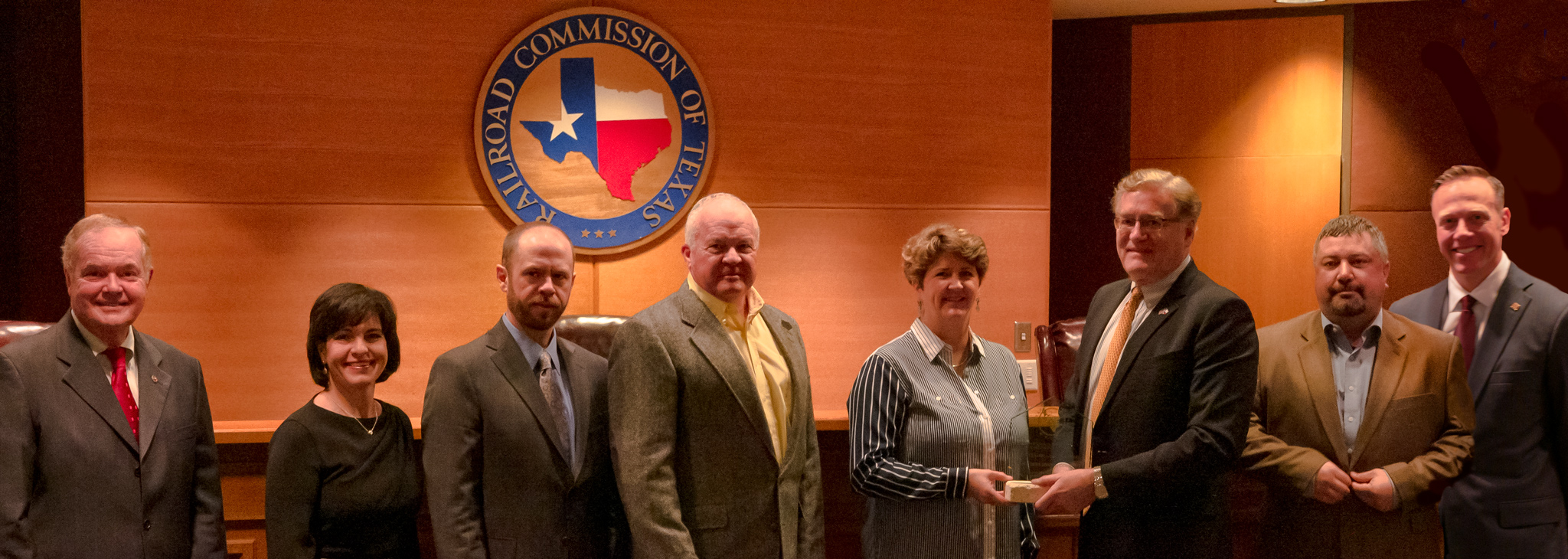2019 The Sabine Mining Company Receives Coal Mining Reclamation Award
The Sabine Mining Company Receives Coal Mining Reclamation Award
The Surface Mining and Reclamation Division awarded the 2019 Railroad Commission of Texas Reclamation Award to The Sabine Mining Company (SMC) for their submittal titled, "Go Native!", which describes SMC’s implementation of native grasses at the South Hallsville No. 1 Mine.
Each year in the fall, the Railroad Commission of Texas announces its Reclamation Awards Program to the Texas Coal Mining industry. This awards program is designed to recognize outstanding and innovative reclamation achievements at Texas coal mines and complements the Interstate Mining Compact Commission's (IMCC) Annual Reclamation Awards Program. Nominees are required to submit their nomination to the Surface Mining and Reclamation Division. A diverse team from the division's technical and enforcement staff then selects a nominee based on a set of criteria developed by IMCC.

Pictured left to right: RRC Commissioner Wayne Christian, RRC Chairman Christi Craddick, Sabine Mining Co. Reps: Josh McAfee; Steve Billingslea, Angela Martin, RRC Surface Mining & Reclamation Interim Director Alex Schoch & Sabine Mining Co. President Andy Hawbaker, RRC Commissioner Ryan Sitton.
Go Native!
SMC’s reclamation program regularly designs lands for use as “grazingland.” Grazingland can be defined as land that includes both grasslands and forestlands where the indigenous vegetation is actively managed for grazing, browsing, or occasional hay production. The grazingland postmining land use at the South Hallsville No. 1 Mine is distinctive in its exclusive use of native grasses that provide diversity of species and wildlife habitat enhancement, as well as nutritional value for grazing livestock. In addition to these benefits, the use of native grasses enhances the soil by providing a deep root system which reduces erosion, recharges ground water, and provides nutrients to the soil once the grasses die and the roots decay.
The native grasslands of Texas have been steadily disappearing while nonnative pastureland, mostly coastal Bermudagrass, has increased to now encompass more than 10 million acres across the State. SMC has succeeded in reestablishing the ecosystem with native grasses at South Hallsville No. 1 Mine, as evidenced by sightings of grassland birds and insects. In addition, cattle grazing on the native grasses have reported weight gains greater than or equal to weight gains of cattle that graze on Bermudagrass or bahiagrass. This makes native grasses more compatible for cattle ranching operations that strive to produce livestock forage and good wildlife habitat simultaneously. Cattle ranching is vital to the regional economy of East Texas. Over 3,400 contiguous acres of grazingland have been planted and are being managed at the South Hallsville No. 1 Mine.
View the Sabine Mining Company's 2019 Texas Reclamation Award Submittal







